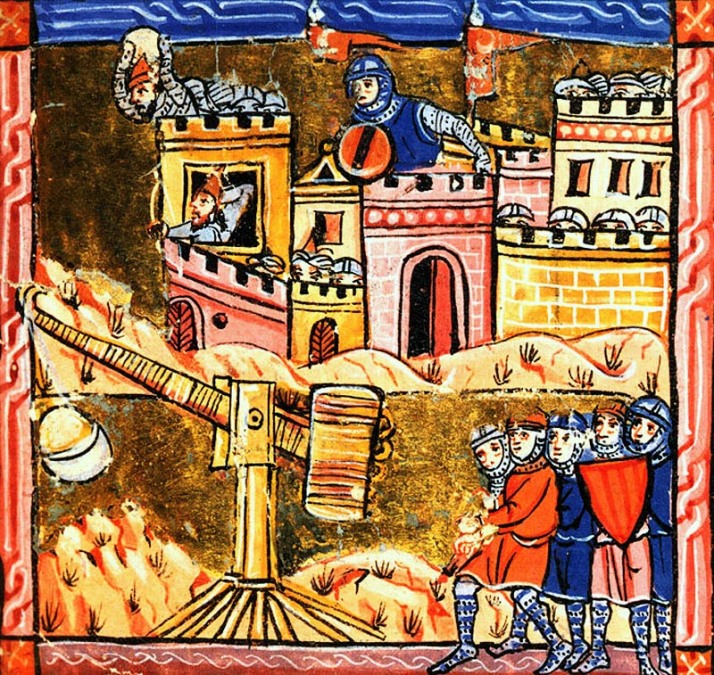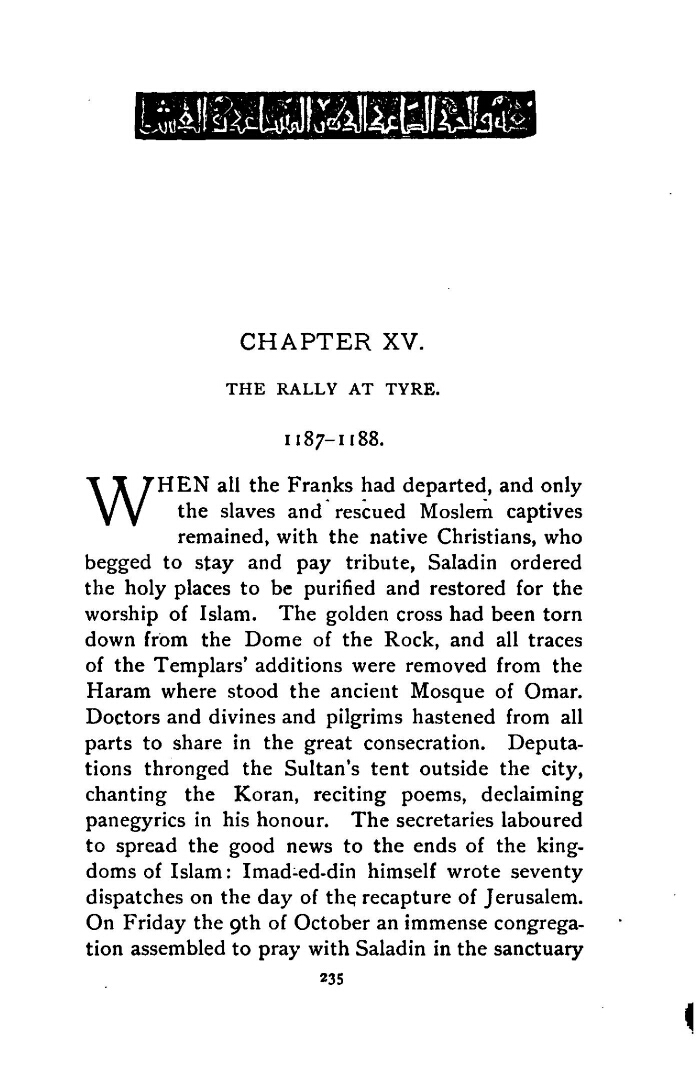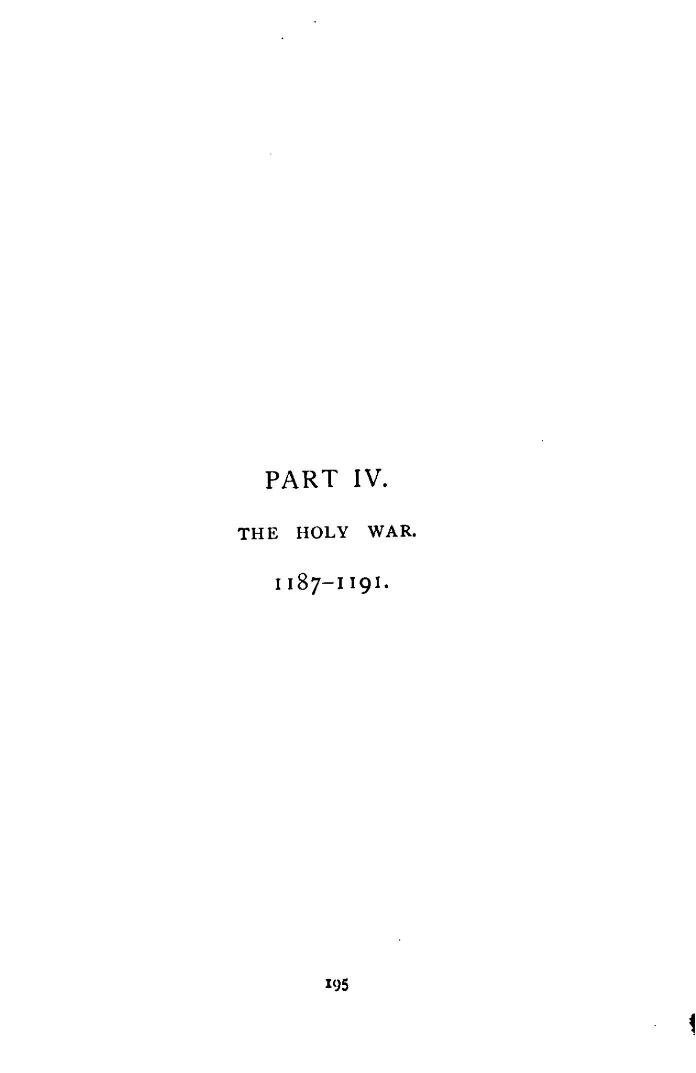Excerpt from Chapter XVII: “……(T)he French…had put Acre under strict blockade. Saracen ships indeed still forced their way in to the relief of the garrison; one was smuggled in under a French disguise, but generally they had to run the gauntlet.
“One such adventure happened in September. Three Egyptian dromonds or ships of burthen opportunely arrived, when there was not enough food in the city to last another day. The Christian galleys were upon the new-comers in a moment. The beach was lined with the Moslem army, calling aloud upon God to save the ships.
“The Sultan himself stood there in an agony of suspense, watching the struggle, ‘like a parent robbed of his child.’ The battle raged, but fortunately for the garrison there was a fair wind, and at last the three ships sailed into the harbour safe and sound, amid the furious shouts of the enemy and the loud thanksgivings of the Faithful.”
Click Here to start at the beginning of this book OR Jump to the Table of Contents OR Jump to the Tables of Illustrations















